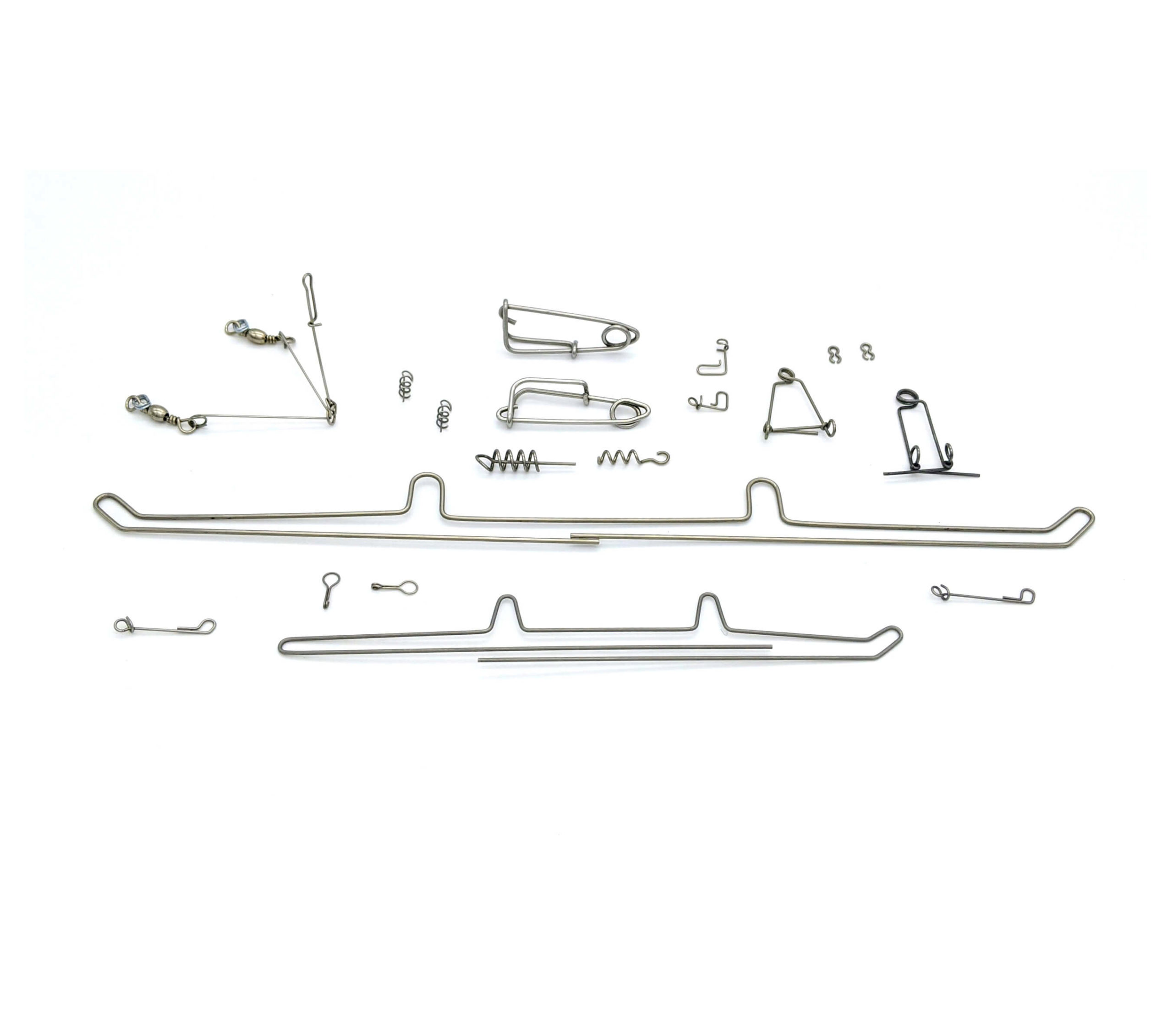Get unique, complex parts easily. No matter your requirements, Chaoyi Spring creates hard-to-produce coil springs and wire forms.
Let us help you create the custom wire form you need, from S-hooks and J-hooks to utility hooks and more.
We work closely with customers across a wide range of industries, helping them design and manufacture made-to-order parts.
Why choose Chaoyi Spring? We prioritize customer-focused collaboration, modern equipment and the latest technology to make your parts per print.
Find the information and guidance you need, from measuring a spring to learning about materials, placing an order and much more.
Wave springs, also known as wave washers, are a unique type of spring that offer several advantages over traditional coil springs. These springs are designed to provide consistent force over


Wave springs, also known as wave washers, are a unique type of spring that offer several advantages over traditional coil springs. These springs are designed to provide consistent force over a wide range of deflections, making them ideal for applications where space is limited or where a high spring rate is required. Crst to crst wave springs are a specific type of wave spring that is designed to operate between two surfaces, such as a bolt and a nut. This article will delve into the world of crst to crst wave springs, exploring their design, applications, advantages, and considerations for choosing the right wave spring for your specific needs.

Crst to crst wave springs are a type of wave spring designed to be installed between two surfaces, typically a bolt and a nut. The 'crst to crst' designation refers to the way the spring is measured. Crst to crst stands for 'crest to crest', which means that the spring's length is measured from the top of one wave to the top of the next wave.
These springs are characterized by their unique wave-like design, which allows them to provide a consistent force over a wide range of deflections. This is unlike traditional coil springs, which have a variable spring rate, meaning their force changes as they are compressed or extended. Crst to crst wave springs are known for their high spring rate, compact size, and excellent load-carrying capacity. They can handle both axial and radial loads, making them versatile for various applications.
Crst to crst wave springs work by utilizing the inherent elasticity of the material they are made from. The wave-shaped design allows the spring to flex and deform under load, storing energy like a conventional spring. When the load is removed, the spring's elasticity returns it to its original shape, releasing the stored energy.
The unique wave design plays a crucial role in the spring's performance. The waves are carefully designed and stacked to create a consistent and predictable force output across the entire deflection range. The spring's stiffness or spring rate is primarily determined by the material's properties, the number of waves, and the thickness of the spring material. The crst to crst measurement helps engineers accurately determine the spring's compressed length when it's installed between the two surfaces.
Crst to crst wave springs are widely used in various industries due to their versatility and unique properties. Their most common applications include:
Choosing crst to crst wave springs offers numerous advantages over conventional coil springs, making them a preferred choice for many applications. Some of their notable benefits include:
While crst to crst wave springs offer numerous advantages, it's important to consider some factors when choosing the right spring for your specific application. These include:
Crst to crst wave springs are a versatile and reliable solution for various applications where space is limited, and high spring rate is required. Their unique wave-like design offers numerous advantages, including high spring rate, compact size, consistent force output, long service life, and resistance to vibration. However, it's essential to consider factors such as spring rate, material, dimensions, and installation methods when choosing the right crst to crst wave spring for your specific needs.
By understanding the characteristics of these springs, engineers can leverage their advantages to design and develop innovative solutions across various industries. From automotive and aerospace to industrial machinery and medical devices, crst to crst wave springs continue to play a vital role in ensuring reliable and efficient performance in demanding applications.
Crst to crst wave springs are a valuable tool for engineers and designers seeking compact, high-performance spring solutions. Their unique features offer distinct advantages over traditional coil springs, making them ideal for a wide range of demanding applications. With careful consideration of spring rate, material, dimensions, and installation methods, engineers can effectively utilize these springs to create reliable and efficient designs that meet the needs of various industries.
Browse some of the custom wire forms and springs that we manufacture. Don’t see what you need? We specialize in made-to-order products that meet your application requirements.
Visit Our GalleryNeed a custom wire form or coil spring? We make it work. Fill out the contact form and a representative will respond within 1 business day. If you have a PDF or CAD file, you can submit to request a quote.